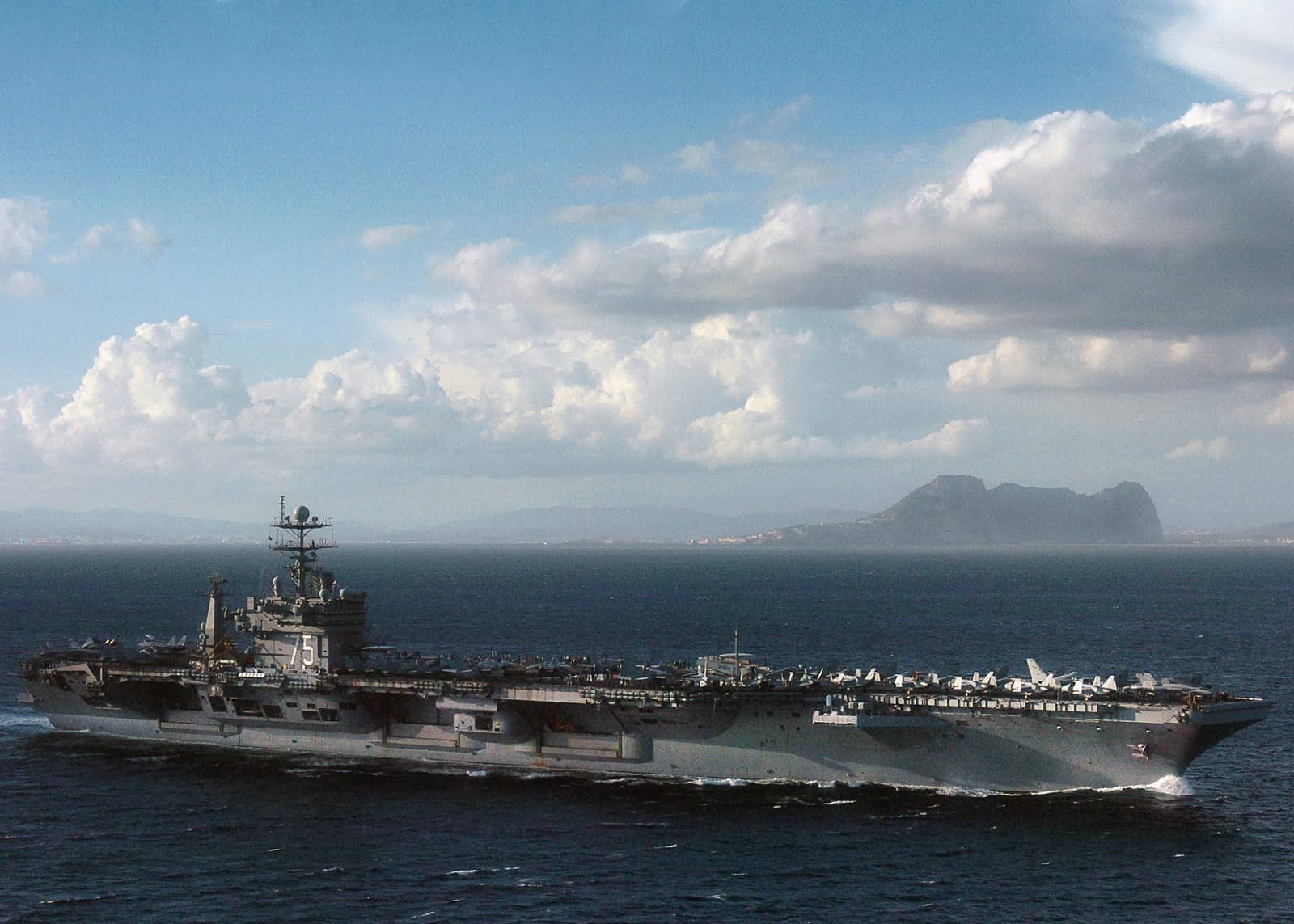The mission of John C. Stennis and her embarked Air Wing (CVW-9) is to conduct sustained combat air operations while forward deployed in the global arena. The embarked Air Wing consists of eight to nine squadrons. Attached aircraft are Navy and Marine F/A-18 Hornet, EA-6B Prowler, MH-60R, MH-60S, and E-2C Hawkeye.
The Air Wing can engage enemy aircraft, submarines, and land targets, or lay mines hundreds of miles from the ship. John C. Stennis's aircraft are used to conduct strikes, support land battles, protect the Battle Group or other friendly shipping, and implement a sea or air blockade. The Air Wing provides a visible presence to demonstrate American power and resolve in a crisis. The ship normally operates as the centerpiece of a Carrier Battle Group commanded by a flag officer embarked upon John C. Stennis and consisting of four to six other ships.
John C. Stennis's two nuclear reactors give her virtually unlimited range and endurance and a top speed in excess of 30 knots (56 km/h, 34.5 mph). The ship's four catapults and four arresting gear engines enable her to launch and recover aircraft rapidly and simultaneously. The ship carries approximately 3 million US gallons (11,000 m3) of fuel for her aircraft and escorts, and enough weapons and stores for extended operations without replenishment. John C. Stennis also has extensive repair capabilities, including a fully equipped Aircraft Intermediate Maintenance Department, a micro-miniature electronics repair shop, and numerous ship repair shops.
For defense, in addition to her Air Wing and accompanying vessels, John C. Stennis has NATO RIM-7 Sea Sparrow and Rolling Airframe Missile (RAM) surface-to-air missile systems, the Phalanx Close-in Weapons System for cruise missile defense, and the AN/SLQ-32Electronic Warfare System.
 |
| Starboard side view of the US Navy (USN) Nimitz Class Aircraft Carrier USS JOHN C. STENNIS (CVN 74) departing Naval Air Station North Island (NASNI), California (CA), heading for her new homeport at Bremerton, Washington (WA). The STENNIS and its crew of over 2,500 Sailors and their families are moving as part of the regular rotation of carriers throughout the fleet. San Diego was the home for the STENNIS and her crewmembers for six years, 01/05/2005. Like it? Buy it! |
 |
| US Navy (USN) Pilots assigned to the "Vikings" of Tactical Electronic Warfare Squadron 129 (VAQ-129), sit in the cockpit of their EA-6B Prowler aircraft while flight deck crewmembers prepare their aircraft for nighttime flight operations aboard the USN Nimitz Class Aircraft Carrier, USS JOHN C. STENNIS (CVN 74), while the ship is underway in the Pacific Ocean conducting carrier qualifications, 03/16/2006. Like it? Buy it! |
 |
| A U.S. Navy Flight Deck Director guides a Carrier Airborne Early warning Squadron 112 (VAW-112,"Golden Hawks") E-2C Hawkeye all-weather, early warning aircraft onto the catapult prior to it launching from the deck of the Nimitz Class Aircraft Carrier USS JOHN C. STENNIS (CVN 74) on Jan. 22, 2007, while the STENNIS and Carrier Air Wing 9 (CVW-9) are conducting carrier qualifications of the coast of Southern California prior to transiting west to bolster security in the U.S. Central Command Area of Operations. (U.S. Navy photo by Mass Communication SPECIALIST 3rd Class Jon Hyde) (Released), 01/22/2007. Like it? Buy it! |
 |
| The Nimitz-class aircraft carrier USS JOHN C. STENNIS (CVN 74) sits anchored off the coast of Fremantle, Australia, during a scheduled port visit, while on a scheduled deployment to the Western Pacific Ocean, 09/29/2004. Like it? Buy it! |













































